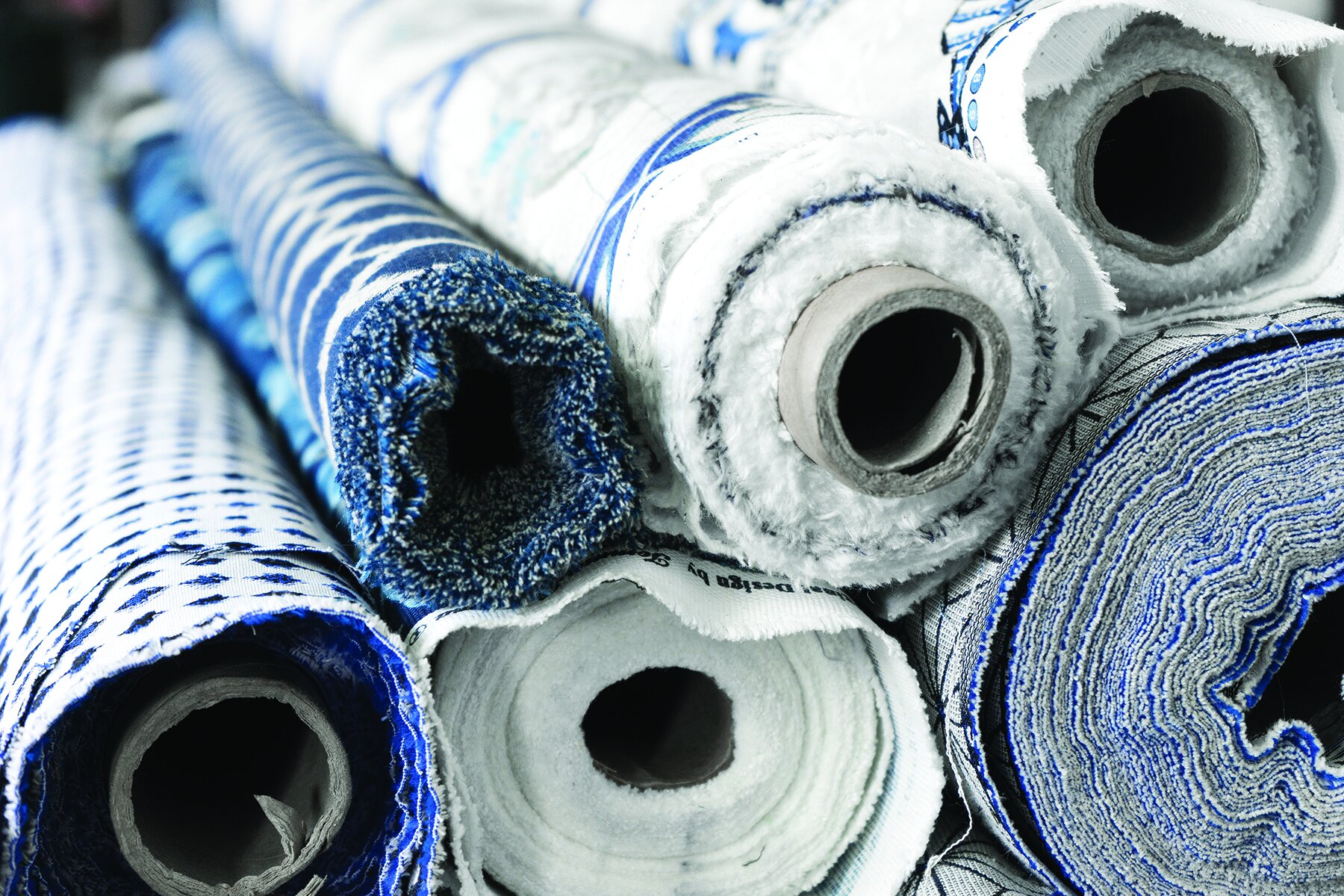UPHOLSTERY DEMYSTIFIED
So you’ve decided to recover a piece in your home. Congrats! But before you hit the fabric stores or start talking to design consultants, let’s arm you with some upholstery basics that will make choosing the right fabric to fit your lifestyle easy and fun.
Au Natural vs Synthetics It all starts with fibers. And it’s import to understand why they are different and how that benefits you. Natural fibers generally feature flat weaves that are ideal for prints. They are softer, and tailor well for upholstered furniture. However, being a natural product they can fade in direct sunlight, and may be susceptible to pilling. Synthetic fibers are made by extruding chemicals into fiber strands. They are more durable and (in general) more resistant to staining and fading than natural fibers. Synthetic fibers can pill just like natural ones. Natural fibers are cotton, linen, wool, silk and rayon. While lovely to the touch they can fade in direct sunlight so consider the amount of light the room will get and furniture placement in the room before you go down this route. Synthetic fibers are acrylic, polyester, nylon, olefin and polypropylene (a lot like polyester). This group is more durable, cleanable and stain resistant – great for high use pieces and homes with kids and pets.
Durability vs Luxury If you have kids or pets, you know your furniture takes a beating and leaves you wondering if you ever own nice things. The right upholstery can quickly solve this issue and leave you feeling like you are living in the lap of luxury.
Here are some options:
Durability: faux suede or Sunbrella (yep – the outdoor/indoor stuff) takes a beating and can be coated to block stains and spills. Distressed leather is another option gives you that old school, lived in look. You can eliminate any freak out fests when kids climb on it with sticky fingers because it’s easy to clean up and wipe away moisture. Just get to the spills quick and you should be good to go.
Wash ability: Slipcovers have come a long way since days of old. A durable, cotton denim-like material is easy to remove and toss in the wash before your mother in law comes over to watch the kiddos. Stains are also easier to treat on a slipcover as well. If you opt to go down the slipcover route, consider getting a backup cover made from the same bolt to ensure color consistency or have some fun and choose an entirely new color.
Don’t open that door: stay away from delicate fabrics that are hard to clean and tend to pill with excessive use. Silks and linens are not your fabric friends when you have kids. Take it from me. I had a custom section made in linen and in less than 3 months I had pilling like no bodies business. Upholstery fail. After ordering a new sofa in much more durable linen like fabric, I added fancy dancy linen pillows. It’s all about compromise.
If kids and pets are non-issue, you can afford a little lux in your life. Belgian wool, satin, chintz, linen and velvet are decedent options. All of these are highly tactile options that embrace you and invite you to sink into them. Just keep in mind that linen easily wrinkles. If you are OCD like me, it might drive you bananas. Stains will be more difficult if not impossible to remove from these fabrics. So if you are thinking you are going to curl up on this piece with a good book and a red glass of wine, make sure that wine is far away from your new fabric.
Patterns vs Solids Here’s my novice guide on when to go with a pattern vs. a solid. If the piece is large in scale or curvy, you go with a solid. If the piece is small or more of a decoration or statement piece, go with a pattern.
Solid upholstery will give your furniture a longer lifespan and the freedom to accent with patterned pillows and throws. Curvy pieces really shine in solids because you accentuate the natural shape of the piece. It’s also wicked difficult to line up patterns on a curve – trust me on this one. I attempted to recover our v-berth cushions for the boat in a pattern and I nearly lost my mind. My mother finally talked some sense into me and suggested a solid, cream vinyl. She’s a genius.
If you want to sound in-the-design-know, here is a breakdown on some basic types of patterns to look for:
Florals/Jacquards - flowers or leaf patterns, usually done at a relatively large scale
Paisley - tear-drop shaped patterns and tend to be relatively ornate
Geometrics - squares, circles, patchwork, and so on
Stripes - pinstripes, awnings, ombres, herringbones Plaids - checks, ginghams, windowpanes, and hound's tooth
Frames - mirrored patterns like damasks
Chair patterns - things like diamonds, ditsy dots, or other patterns that are smaller scale.
Novelties - unusual designs such as animal skins or highly decorative designs
Ethnic patterns - suzani or ikat patterns.
Prints are anything printed on top of a woven fabric. Warning: these can be more susceptible to fading as the design is printed on top of the fabric and not worked into the fabric
Explore VNTG Home upholstery services or visit them in their Cleveland store.


